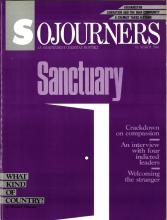I heard the story from Don Mosley of Jubilee Partners in Comer, Georgia, and it has stayed with me.
Read the Full Article

Already a subscriber? Login

I heard the story from Don Mosley of Jubilee Partners in Comer, Georgia, and it has stayed with me.
